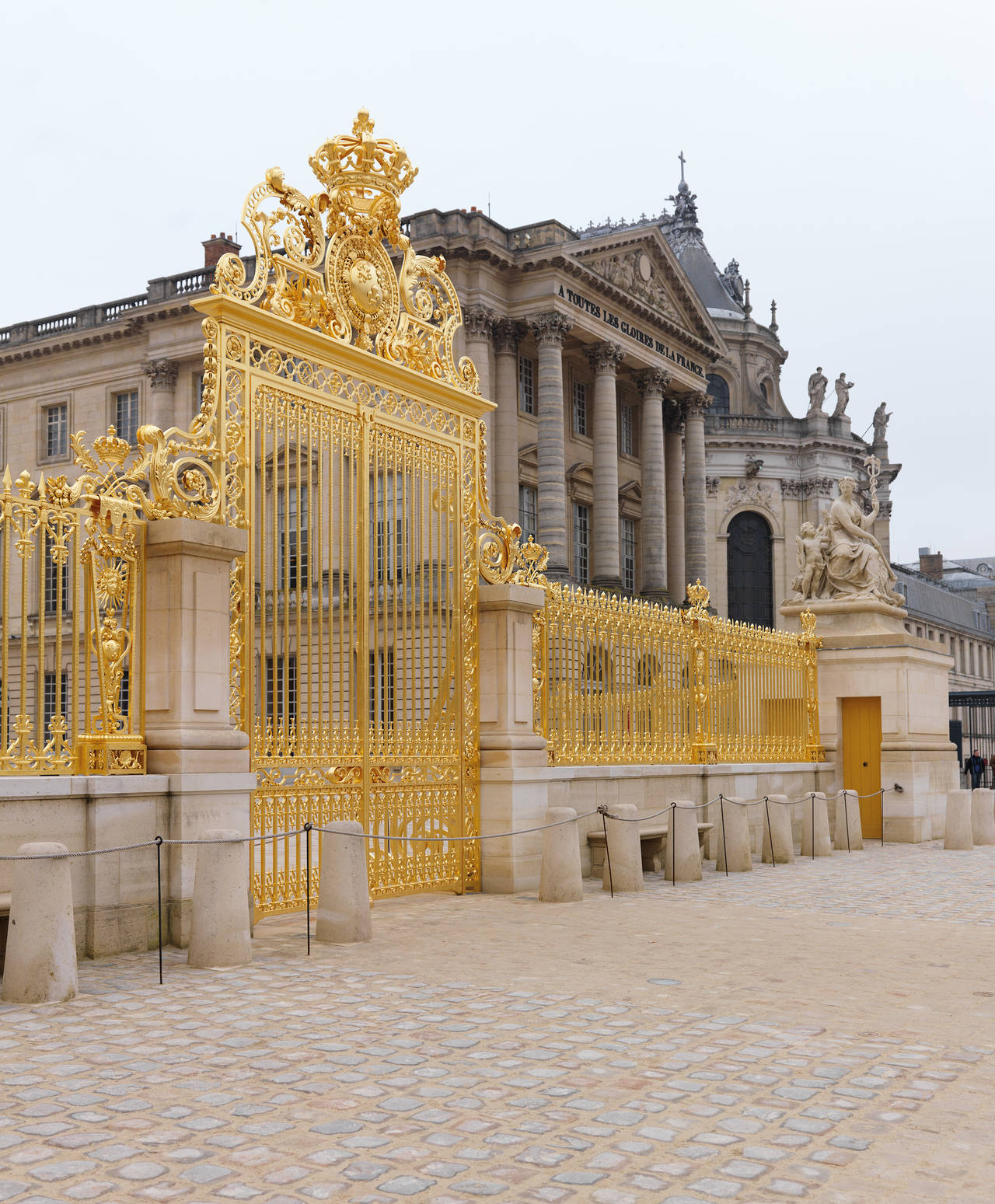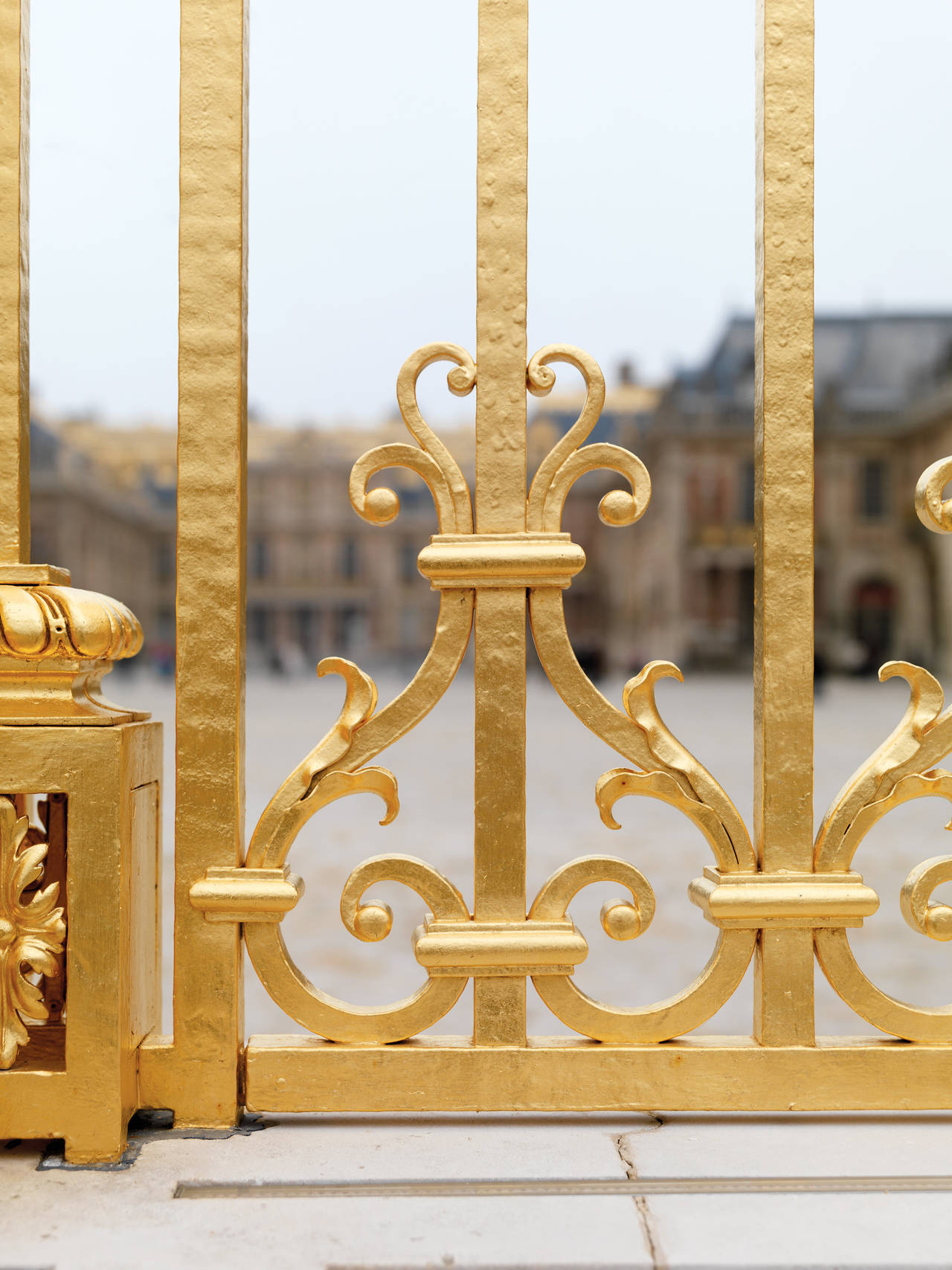Some reflections on the “new” Grille Royale at Versailles.
The invitation to put forward some considerations regarding the restoration of the historical gate, the Grille Royale, in the Castle of Versailles, designed by Jules Hardouin Mansart at the end of the 17th century, in order to separate the Cour d’Honneur from the Cour Royale, offers a starting point for some reflections on the state of the restoration discipline in Italy, Europe and the rest of the world. It would be timely to consider as a theoretical path what has systemized, developed and differentiated, following theoretical affirmations made by Cesare Brandi, Roberto Pane and Renato Bonelli, who fall into the category of “critical restoration”. The assumption from which the French historical preservationists appear to have departed, in re-proposing the gate, restoring the original form and materials gathered from iconographic documentation, is what in the history of restoration, is known as “historical restoration”, and which in Italy had consequences at the turn of the 19th century. It develops from information which permits the revival of forms and materials that have been lost, as in the case of the Grille Royale. In this case, we could say that the restoration of the historical gate “as and where was”, executed with rigorous form and with the use of the re-proposed historical materials, appears as an anachronistic, theoretical revival.

The practice of restoration, or re-proposal, adhering as far as possible to the original element, pursued in Italy by the refined architectural historian and restorer, Paolo Marconi, is widespread in North-European countries, as we can see from the List of Monuments and Sites entered in the World Heritage of UNESCO. In Russia, for instance, it is customary to re-gild the cupolas of historical orthodox churches, re-paint the brick walls and restore entire floors, ornamentation and furnishings inside imperial residences damaged during the Second World War. In Vilnius, capital of Lithuania, to properly celebrate its candidature for the European Capital of Culture 2009, among other events, the Royal Palace behind the Cathedral was entirely rebuilt. In the Orient also, in China for example, restoration is widespread; and neither is Greece exempt from this practice, proven by the recent interventions on the Parthenon and Propylaea, in the Acropolis of Athens, and restoration work executed in the archaeological site of Epidauro. Nevertheless, being forced to compare the French project with some of ours, we cannot ignore the various facets which distinguish the restoration scene in Italy over the last 25-30 years. Although it is generally more in keeping with the policies of critical restoration mentioned above, it offers some examples in countertendency, such as the re-proposal “as and where was” of two historical theatres, whose interior and roof had been demolished by a fire, the Fenice in Venice and Petruzzelli in Bari. While in Genoa’s Carlo Felice, Aldo Rossi designed an addition, an “immense” stage tower, on the other hand, Mario Botta’s project for that of the Scala in Milan appears somehow more “appropriate”. It seems that in some important instances, except some “minor” examples of which there are many, in Italy we lose historic opportunities like the one seized by Norman Foster in the project for Berlin’s Reichstag, even though in another context and in a very particular cultural climate in terms of potential. While the context very much conditions the proposals, as in the cases of Venice and Bari, this does not mean that there cannot be integrations with new elements, which dialogue with and respect the very context. In this regard, owing to the originality of some of the solutions, we should re-assess and reconsider the case histories of the so-called “necessary restorations”, carried out in post-war Italy between the mid 1940s and early 1950s. We have passed from a Crocean, Giovannoni-like concept of restoration, which characterised Italian town-planning of the twenty-year Fascist period (the Monument, isolated by “thinning out” the shapeless and oppressive context, often formed by Medieval and Renaissance stratifications, which had shaped places like Rome, for instance in the building once erected upon the current site of Via dei Fori Imperiali, in the Spina dei Borghi, in Piazza Montanara at the foot of the Ara Coeli, in Piazza Augusto Imperatore, etc.), to the concept of integral conservation, which developed in the 1960s. In this concept we recognize authenticity and therefore historical, if not artistic interest. And we have ended up in a culture that has produced and moulded the different “materials”, which make up the buildings of the Italian historical contexts, generalizing the concept of restoration to the so-called “historical centre”, identified by the town-planning instruments in Zones “A” of the master plan. We could say that in the last century various theories have been put forward, and not in vain: those of the various Charters of Athens (1931), of Gubbio (1960), of Venice (1964), of Restoration (1972). Moreover, between the end of the 1960s and early ‘70s, some interesting urban restoration experiments were carried out by several municipal administrations, for instance, Bologna, designed and directed by Pierluigi Cervellati; and in Rome in the Tor di Nona complex which nonetheless remain isolated examples.

We have finally arrived at a participatory concept of restoration, where the citizens also, through various associations, manifest their own wishes and in some way “steer” both public actions and private initiatives, through which protection and restoration are carried out. There could also be cases where “governmental powers” decide, even if predominant public opinion is against certain interventions involving modification and the introduction of new elements into a historical context. In Rome, some cases in recent years, and which still incite lively debate, belong to such a case history. In the most recent theoretical assumptions of critical restoration (Giovanni Carbonara, Paolo Fancelli, Gaetano Miarelli Mariani, Gianfranco Spagnesi, Benito Paolo Torsello), there has been much debate with advocates of the theory of conservation (Amedeo Bellini, Marco Dezzi Bardeschi), without however resolving and harmonizing the most unorthodox positions. The rapid and tumultuous transformations of many metropolitan areas, above all in the Orient, cause the demolition of entire chunks of historical cities to make way for new buildings of great value, some even “signed” by an international “archistar”. What appears to be of particular relevance to the present is the reconsideration of the concept of material value of post-ancient architecture, inasmuch as expression of the culture which produced it, and the specific character of such architecture and/or historical building, just as it has taken shape and been preserved throughout Europe but above all in Italy. Perhaps in this way, if we have a clear idea of a building’s value whose integrity is preserved, we will come to increasingly “appreciate” or “depreciate” with operations which may alter its originality and uniqueness, parameters that give it a determinate value, according to an estimative scale that is not difficult to elaborate. In this way, we could direct certain choices in terms of restoration better, which, although reversible, scientifically and technically exemplary, do not always appear coherent with the most up-to-date theoretical and disciplinary results.





